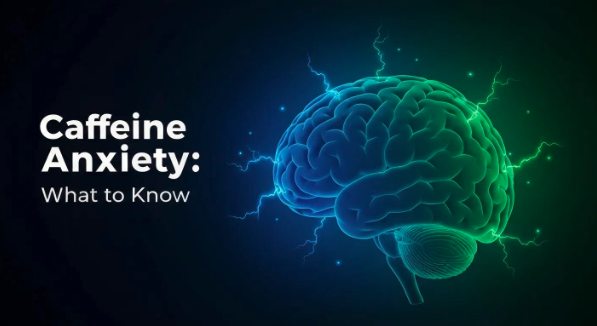Exercises Role in Treating Depression
Explore how exercise as a treatment for depression boosts mood and aids recovery for better mental health.

The Benefits of Exercise for Depression
Exercise plays a crucial role in managing and treating depression. It can improve mood and reduce the risk of recurrence. This section explores these benefits in more detail.

Exercise and Mood Improvement
Physical activities can significantly enhance mood. Simple tasks such as gardening, walking, or washing the car can uplift mental health just as effectively as structured exercise programs. Any physical movement contributes positively to mood and overall well-being Mayo Clinic.
Regular physical activity helps alleviate symptoms of depression and anxiety for several reasons:
The table below summarizes the mental health benefits associated with different types of physical activities:
Activity TypeMood Improvement BenefitsGardeningReduces stress and promotes relaxationWalkingBoosts endorphin levels and increases energyStructured workoutsProvides a sense of accomplishment
Notably, exercise is effective in benefiting various groups, including those with chronic illnesses, pregnant women, and older adults, enhancing their mental health outcomes Medical News Today.
Prevention of Depression Recurrence
Engaging in physical activity not only eases symptoms when they arise but also plays a critical role in preventing future episodes of depression. Regular exercise can improve symptoms significantly over time, with these benefits potentially lasting as long as one continues their physical activities Mayo Clinic.
It is important to note that while exercise has many benefits, it should complement other treatments, such as talk therapy or medication. Individuals experiencing depression should consult with healthcare professionals to tailor a suitable exercise regimen based on their specific conditions and treatments. This collaborative approach can maximize the protective effects of physical activity against depression recurrence.
For more details on effective treatments, consider exploring the role of neurotransmitters in depression and various therapeutic options such as psychedelic-assisted therapy for depression: current research and potential.
Physical Activities for Mental Health
Engaging in physical activities is an essential aspect of treating depression. It can take various forms, from formal structured exercise routines to informal everyday activities. Both types have significant benefits for mental health.
Informal vs. Formal Exercise
Informal exercise includes everyday activities that increase movement and physical exertion. Examples include gardening, walking, cleaning, and washing a car. These activities may not fit the traditional definition of exercise, yet they contribute positively to mood and mental health. Research shows that even these less structured activities can significantly improve symptoms of depression.
In contrast, formal exercise refers to planned and structured physical activities, such as jogging, weightlifting, or participating in fitness classes. Engaging in these activities has been shown to reduce depression, anxiety, and psychological distress. Studies indicate that completing 150 minutes of various physical activities per week can be more effective than usual care, like medications [2].
Type of ExerciseExample ActivitiesBenefitsInformal ExerciseGardening, walking, cleaningImproves mood, boosts mental healthFormal ExerciseJogging, weightlifting, fitness classesReduces depression, anxiety, psychological distress
Impact of Various Physical Activities
Engagement in any form of physical activity offers mental health benefits. Regular exercise triggers the release of endorphins, known as 'feel-good' hormones, which can help alleviate depression and anxiety. It also reduces immune system chemicals that can worsen depression and raises body temperature, which may have calming effects [1].
Different physical activities produce varying impacts on mental health:
Activity TypePotential Mental Health BenefitsCardiovascular ExerciseIncreases endorphins, improves moodStrength TrainingBoosts confidence, improves self-imageMind-Body ActivitiesReduces stress, enhances emotional regulationLow-Intensity ActivitiesProvides consistent movement, boosts overall energy
In summary, both informal and formal physical activities play crucial roles in improving mental health and combating depression. Individuals experiencing depressive symptoms should consider incorporating various forms of movement into their daily routines. This can lead to improved well-being and foster resilience against future episodes of depression. For more information on effective treatments, check the role of neurotransmitters in depression and explore other therapeutic options.
Guidelines for Exercise and Depression
Recommended Exercise Duration
For those exploring exercise as a treatment for depression, the U.S. Department of Health and Human Services recommends that healthy adults engage in at least 150 minutes of moderate aerobic activity each week. Alternatively, they can opt for 75 minutes of vigorous aerobic activity. This level of physical activity has been found to significantly benefit mental health.
Activity TypeRecommended DurationModerate Aerobic Activity150 minutes per weekVigorous Aerobic Activity75 minutes per week
Short bouts of physical activity throughout the day also contribute positively to mental well-being. Recognizing that any movement can help is important for individuals dealing with depression.
Incorporating Physical Activity Daily
In addition to structured exercise, various daily activities can boost mood effectively. Engaging in informal physical tasks such as gardening, washing a car, or even walking can enhance mental health. These simple activities fulfill the recommended physical activity guidelines, promoting overall wellness alongside other treatments for depression.
Informal ActivitiesBenefitsGardeningBoosts mood and physical healthWashing a CarProvides light exerciseWalkingImproves cardiovascular health
As outlined by the U.S. Department of Health and Human Services, combining structured and informal physical activity can create a comprehensive approach to managing depression. Incorporating these activities into daily routines ensures that individuals maintain a physically active lifestyle, ultimately supporting better mental health. For more insights about managing feelings related to depression, consider reading about male depression: breaking the silence and stigma or high-functioning depression: when depression is hidden.
Complementary Nature of Exercise
Integrating exercise into a comprehensive treatment plan for depression can significantly enhance recovery. While physical activity is beneficial for alleviating symptoms, it is crucial to understand its role alongside traditional therapies.
Exercise in Conjunction with Therapy
Research indicates that exercise and physical activity can ease symptoms of depression and anxiety, but they are not substitutes for talk therapy or medications. Patients experiencing clinical depression may receive improved outcomes through a combined approach involving structured exercise programs and cognitive-behavioral therapies. Evidence suggests that when exercise is incorporated into the treatment regimen, it can lead to positive benefits and a reduction in depressive symptoms [3].
Structured exercise provides an organized framework that can complement therapeutic practices, reinforcing the psychological benefits of movement and social engagement. Physical activity fosters a sense of accomplishment and can aid in shifting negative thought patterns. For more insights on cognitive approaches to managing depression, refer to our article on cognitive distortions in depression: identifying and challenging negative thoughts.
Consultation with Healthcare Professionals
Consulting healthcare professionals is vital when combining exercise with treatment for depression. They can provide tailored advice on suitable activities based on individual health conditions and medications. This ensures that any exercise regimen is safe and appropriate for the person's physical and mental health requirements. As per the Mayo Clinic, individuals should engage in discussions with their healthcare providers before embarking on an exercise program.
Healthcare professionals can also guide patients in finding the right balance between physical activity, therapy, and possibly medication. For those exploring various treatment options, additional resources such as transcranial magnetic stimulation (TMS) for depression or electroconvulsive therapy (ECT): understanding its use in severe depression can be beneficial to consider in conjunction with exercise.
In summary, while exercise serves as a powerful tool in managing depression, its effectiveness is maximized when used in conjunction with professional guidance and other therapeutic options.
Exercise vs. Other Depression Treatments
Effectiveness Comparison
Exercise has been shown to play a beneficial role in managing depression. Research indicates that it is negatively correlated with the risk of depression. Randomized controlled trials have demonstrated that different types of exercise, including aerobic, resistance, and mind-body exercises, can significantly improve depressive symptoms [4].
Moreover, studies confirm that physical activity can alleviate symptoms of depression effectively, often showing comparable efficacy to drug therapies and psychological interventions [4]. In fact, when compared to standard treatment methods, such as psychotherapy or cognitive therapy, exercise has demonstrated similar effectiveness in reducing depression symptoms. For example, running was found to be just as effective as psychotherapy in this regard [3].
Treatment TypeEffectivenessExerciseComparable to psychotherapyAntidepressant MedicationEfficacy close to exerciseCognitive TherapySimilar outcomes to exercise in symptom relief
Exercise Intensity and Duration
The intensity and duration of exercise also significantly influence its effectiveness in treating depression. Engaging in a structured fitness program has been associated with notable long-term benefits, including substantial reductions in symptoms of depression, anxiety, and improvements in self-concept. Research shows that depressed adults who participated in a fitness program had significantly better outcomes than those who did not, particularly after following the program for 12 weeks [3].
Additionally, studies have indicated that exercise can enhance the effectiveness of antidepressants when used as an adjunctive treatment. Patients participating in both exercise and medication have shown a higher rate of clinical response compared to those solely on medication [5].
Exercise CharacteristicsBenefitsRegular IntensityReduces symptoms significantly12 Weeks DurationImprovements in mental health notedCombined with MedicationHigher response rates in patients
Incorporating exercise as a treatment for depression can be an effective strategy, both on its own and in combination with other treatment methods.
Future of Exercise in Depression Treatment
Dose-Response Relationships
Research into the role of exercise as a treatment for depression is evolving, particularly in the area of dose-response relationships. This concept focuses on determining the optimal amount of physical activity needed to achieve maximal benefits for mental health. It is important to understand how various factors, such as exercise type, intensity, duration, and frequency, contribute to improving depressive symptoms.
Table 1 summarizes the findings on exercise intensity and its effectiveness in reducing depressive symptoms:
Exercise IntensityRecommended DurationEffectivenessLow Intensity30 minutes, 3 times a weekModerate improvementModerate Intensity30-60 minutes, 3-5 times a weekSignificant improvementHigh Intensity30 minutes, 5 times a weekBest for overall functioning
Moderate intensity exercise has shown sufficient results in alleviating depressive symptoms, while higher doses often lead to better overall functioning [6]. Future studies are likely to explore specific recommendations that cater to individual needs, maximizing the therapeutic impact of exercise.
Molecular Mechanisms and Longitudinal Studies
Understanding the molecular mechanisms that connect exercise and depression is an emerging area of interest. Exercise therapy has far-reaching implications beyond merely boosting mood; it influences neurotransmitter levels, which play a vital role in regulating mood and emotional health. These interactions may contribute to the antidepressant effects observed with regular physical activity [7].
Longitudinal studies are crucial as they assess adherence to exercise programs over time, alongside economic and professional considerations in managing depression through physical activity. Such research can enhance our understanding of how consistent engagement in exercise impacts mental health in diverse populations, providing evidence for its incorporation into standard treatment protocols.
In addition, mind-body exercises such as yoga and Tai Chi have shown promising results for individuals across various age groups, indicating potential pathways through which exercise can positively affect mental health [6]. By continuing to explore these mechanisms and conducting more rigorous longitudinal studies, healthcare professionals can better harness the power of exercise as an effective treatment for depression.
As the research landscape evolves, combining exercise with other therapeutic interventions may offer comprehensive approaches to improve mental health outcomes, helping individuals manage their depression more effectively. For related topics, refer to our articles on high-functioning depression: when depression is hidden and electroconvulsive therapy (ECT): understanding its use in severe depression.
References
[2]:
[3]:
[4]:
[5]:
[6]:
[7]:
More Resources
A team ready to start your journey.
Get in touch — today.
We are a safe space – a haven for exceptional individuals to receive discreet, personalized, in-person treatment and care.
.avif)



.webp)






